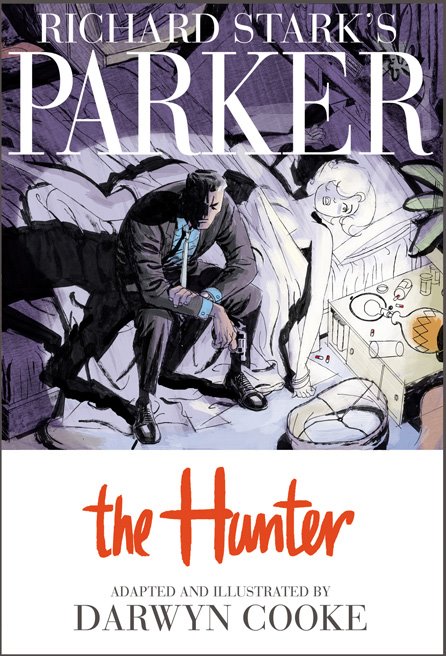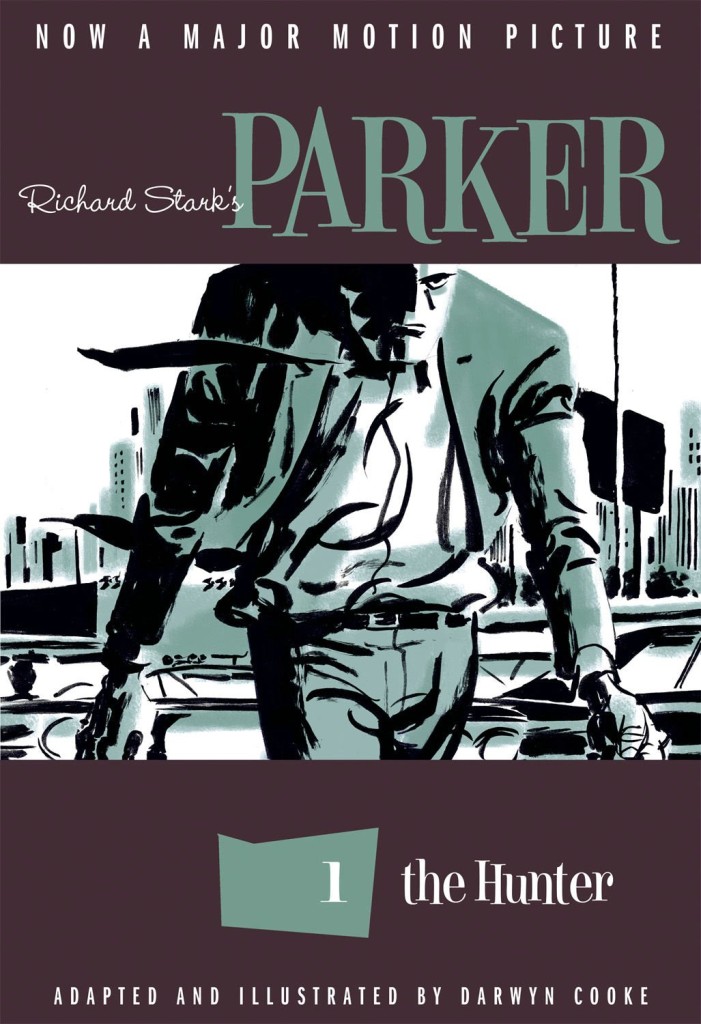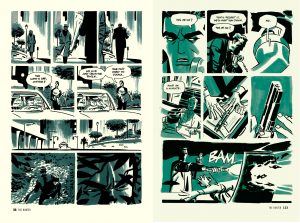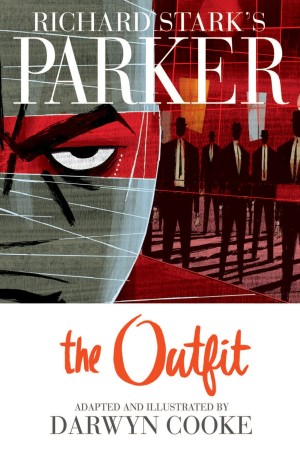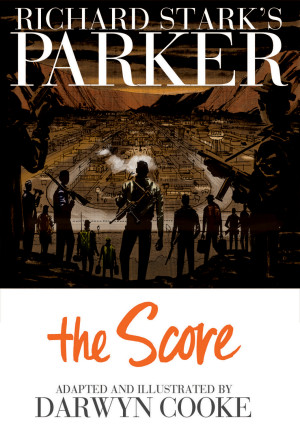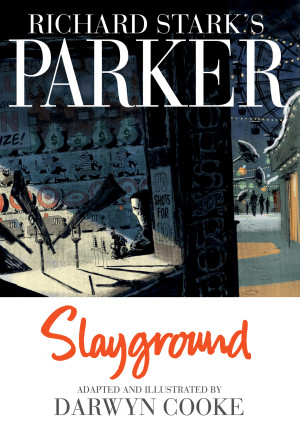Review by Frank Plowright
Donald Westlake, hereafter referred to by his Parker alias of Richard Stark, relates how he conceived his resourceful robber Parker on the inside fold of the dust cover to these hardbound adaptations of his work. Deposited on the wrong side of New York’s George Washington bridge he opted to walk across to catch the subway. In the high crosswinds over the river the bridge moved slightly, and the vibration of the passing traffic seeped through his soles. Having caught his train Stark pondered the type of person who’d purposefully stride across the bridge, and Parker was born.
Darwyn Cooke adapts the scene as Stark imagined it, and indeed described it, as an almost wordless thirteen page sequence opening this introductory Parker story. It’s summer 1962, the apex of the martini era, and a fired-up keg of a man on the verge of explosion is heading into New York on a single-minded mission. A quarter of the book follows him around the city as he pieces elements of his life together. He’s resourceful and intimidating, someone with no compunctions about breaking the law or killing, yet also a career criminal with the capacity to think ahead and plan for the bad days.
The reason for Parker’s intensity lies in a caper that went wrong, and the possibility that he was set up as the patsy. His reputation is his calling card, and this isn’t a matter Parker can let go. Not that he wants to.
Is there another comic artist working today able to evoke the 1960s in such elegance as Cooke? He’s absolutely convincing with the upper end of period Manhattan style, yet equally so presenting the smaller details of a grimy washroom or a deserted subway station. Labelling his art as refined retro barely renders it due respect, but provides an instant shorthand touchstone. The elegance, however, doesn’t gloss over the brutality on display. Parker possesses an almost obsessional capacity for moulding the world around his ethical viewpoint, and any means justify this. It’s a personal violence he employs, unafraid to dirty his hands.
The period verisimilitude in both the original novel and this adaptation extends to what would now be considered primitive and unacceptable treatment of women. Parker is very much of his era, however disturbing that may be. It serves to underline that despite the charismatic presentation, Parker is not a nice guy, and a protagonist should never be confused with a hero.
The quality here found a market, and resulted in three further adaptations, The Outfit, The Score and Slayground. If a small hardback edition doesn’t quite match your estimation of worth, this is also available combined with The Outfit and innumerable extras as Parker: The Martini Edition, a luxurious oversize slipcased hardback.
